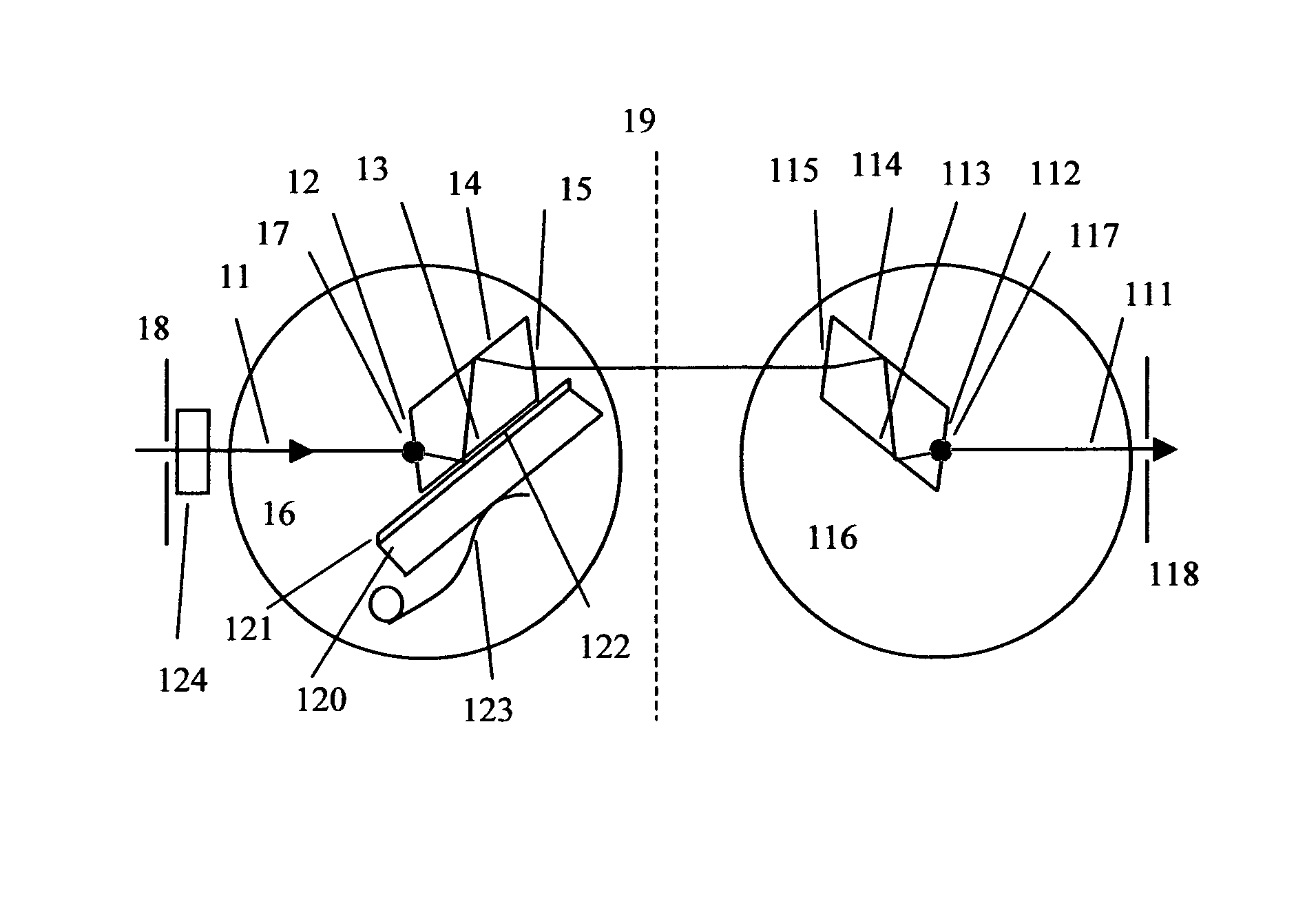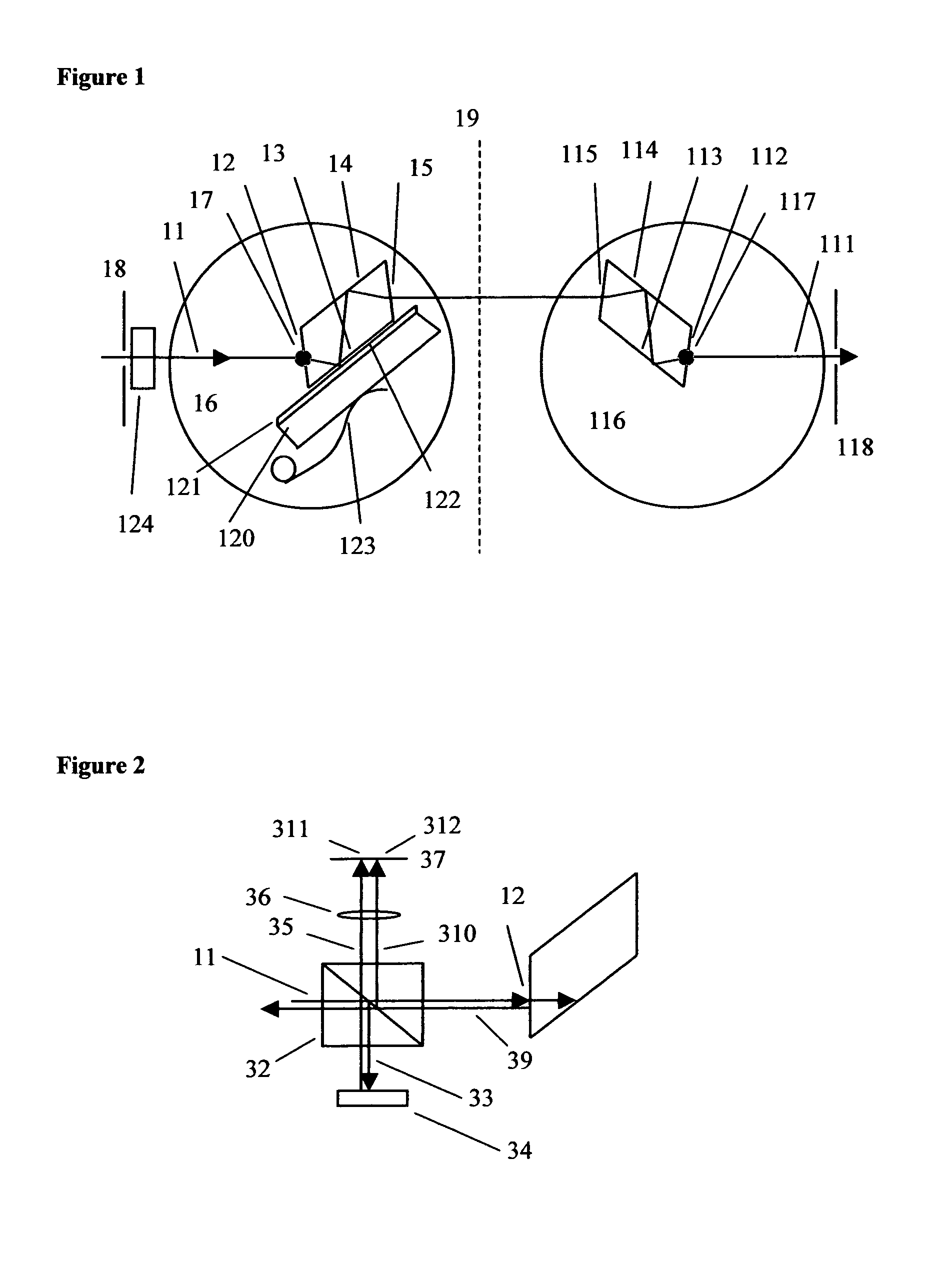Apparatus for measuring thin film refractive index and thickness with a spectrophotometer
a thin film refractive index and spectrophotometer technology, applied in the direction of optical radiation measurement, instruments, spectrometry/spectrophotometry/monochromators, etc., can solve the problems of difficult to measure the thickness and the index individually, the thickness and the index are not very accurate, and the cost of prism couplers and ellipsometers are quite high and other problems, to achieve the effect of improving the accuracy of the devi
- Summary
- Abstract
- Description
- Claims
- Application Information
AI Technical Summary
Benefits of technology
Problems solved by technology
Method used
Image
Examples
first embodiment
[0023]a device for measuring the refractive index and thickness of a thin film that is applied to a sample plate is shown schematically in FIG. 1.
[0024]An input beam path 11 represents a path that electromagnetic radiation of a central wavelength and direction enters the device. The beam path has the form of a line in space with a direction.
[0025]A first right prism consists of material that has a refractive index and that is transparent in the first wavelength band, and has a refractive index np. The first right prism has at least four surfaces with normals that all lie in a plane, which in the claims we list as:
[0026]A first planar first transmission surface 12
[0027]A first planar first reflection surface 13, which forms an acute angle with the first planar first transmission surface that we call the first prism angle
[0028]A first planar second transmission surface 14, that is parallel to the first planar first transmission surface
[0029]A first planar second reflection surface 15,...
case 1
[0055 is the more difficult case to treat theoretically, so we start with case 2. For case 2, in which light can be transmitted through the sample plate, the transmission provides an energy loss mechanism. Except in extraordinary circumstances, the propagation length will be much smaller than the beam diameter, and an infinite plane wave solution will be valid, so we can use standard thin film modeling to calculate the reflection and transmission of the system. This theory is described, for example, in Thin-Film Optical Filters, Fourth Edition, Taylor & Francis (CRC Press) (2010), by A. Macleod.
[0056]Case 1 is more difficult theoretically because plane wave theory does not apply directly. An infinite plane wave will couple into and out of the waveguide mode periodically, always resulting in 100% reflection. There are several physical effects, however that can reduce the reflection to values that are less than 100%. The first mechanism is loss due to scattering and absorption in the ...
PUM
 Login to View More
Login to View More Abstract
Description
Claims
Application Information
 Login to View More
Login to View More - R&D
- Intellectual Property
- Life Sciences
- Materials
- Tech Scout
- Unparalleled Data Quality
- Higher Quality Content
- 60% Fewer Hallucinations
Browse by: Latest US Patents, China's latest patents, Technical Efficacy Thesaurus, Application Domain, Technology Topic, Popular Technical Reports.
© 2025 PatSnap. All rights reserved.Legal|Privacy policy|Modern Slavery Act Transparency Statement|Sitemap|About US| Contact US: help@patsnap.com



